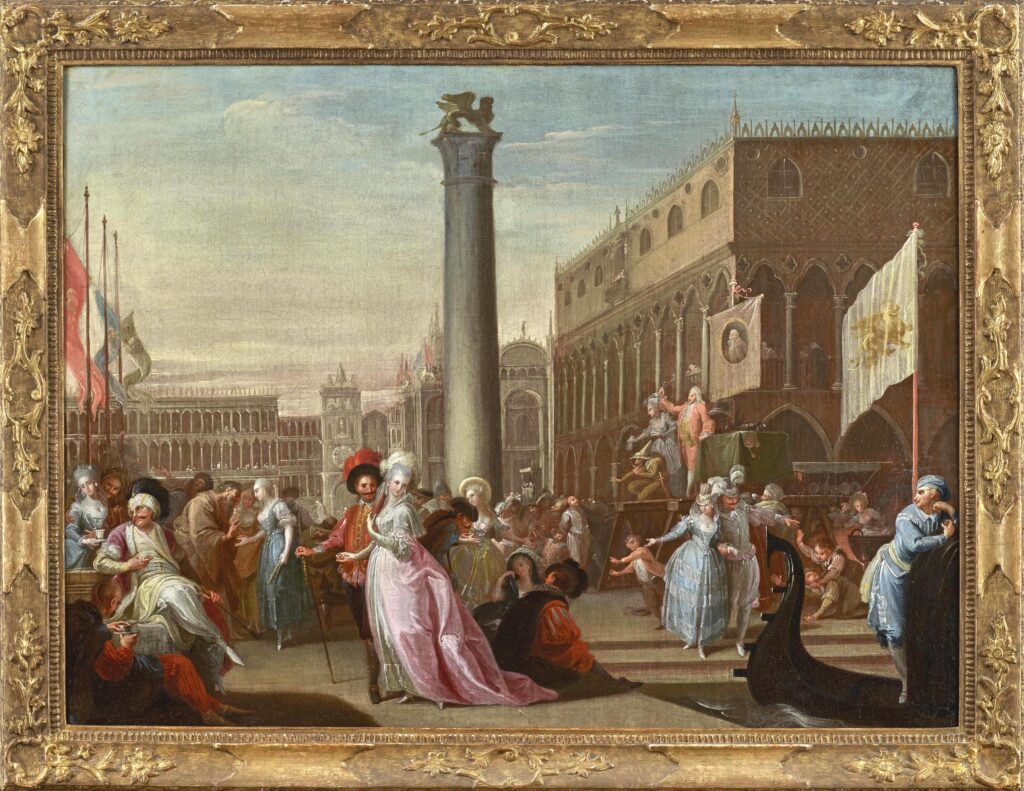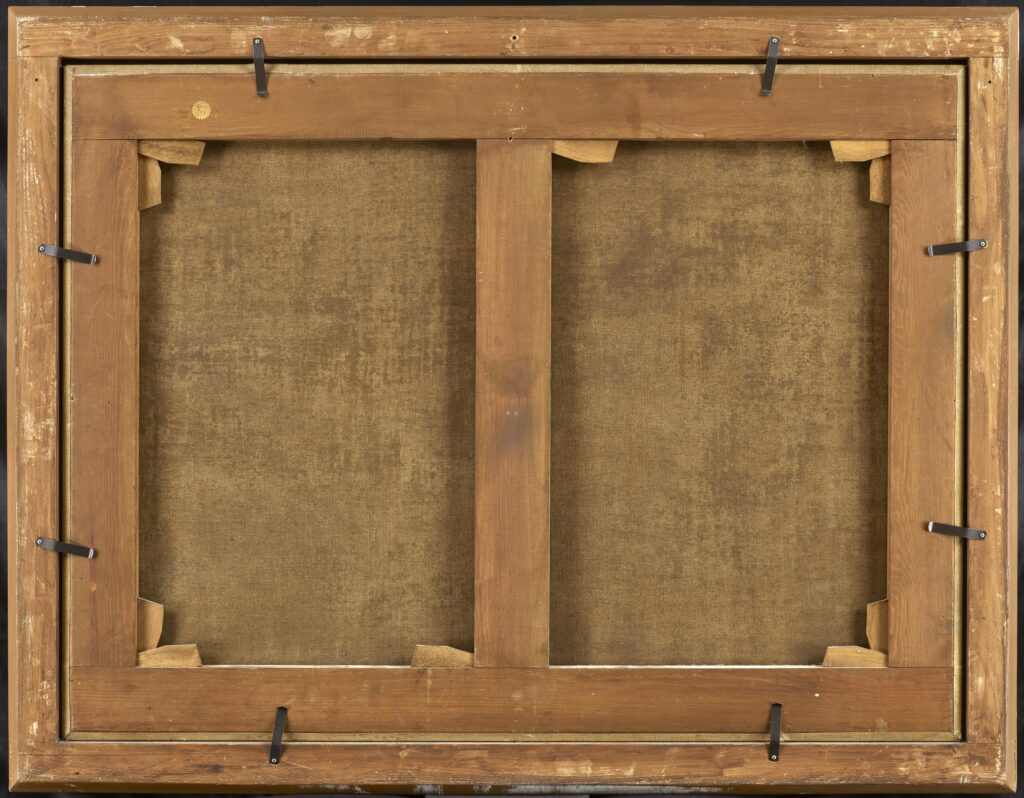Johann Josef Karl Henrici
1737 – 1823
The Piazzetta di San Marco, Venice, during Carnival with elegant Turkish, Chinese and Western European Figures mingling with Commedia dell’Arte Performers, while a Ciarlatano (or Quack) touts his Wares outside the Doge’s Palace


Medium:
Oil on Canvas
Category:
Dimensions:
68.5(h) x 91.3(w) cms
Framed Dimensions:
80(h) x 103(w) cms
Signed:
Monogrammed 'C H' on the Stone slab with a cross-like symbol, perhaps denoting a date
Essay:
Technically rooted in the Baroque era, Henrici made his living painting altar pieces and frescoes in Tyrolean churches, but his theatrical training was put to particularly good use in his softly coloured, elegant and playful conversation pieces like ours. Other secular works by the artist include two large allegories, 'Music' and 'Hearing', on display at the Academy of Music in Ljubljana, Akademija za Glasbo. These paintings are excellent examples of the Rococo style that, having emanated from early 18th century French palaces, would spread across Europe over the following decades, charmingly infused with exotic influences of chinoiserie and, not least, turquerie:
Centuries of hostilities between the 'East' and the 'West' (such as the 14th century Turkish occupation of the Balkans and the relatively recent Battle of Vienna in 1683) had fuelled a long-held perception in Western Europe of the Ottoman Empire as the barbarian enemy. This tension slowly eased towards the end of the 17th century as conflicts began to be resolved diplomatically. The ability to navigate around Africa opened up seaways and trade routes, enabling a wider cultural and mercantile exchange internationally. The resulting popularity of explorations into hitherto unknown parts of the world sparked a seemingly insatiable appetite for anything Ottoman in Western Europe, and well-to-do Westerners would try to emulate this style in their thinking, clothing, interiors, architecture, music and art.
It is amusing to see how the same figures appear repeatedly in Henrici’s turquerie paintings. A work entitled 'The painter’s studio', that recently appeared on the French market, shows the artist seated with his palette and working on a portrait of a beautiful lady (his wife?) with very similar facial features to the central female figure in our painting. His own likeness bears a strong resemblance to the young gondolier, who appears on the lower right of our work, lost in admiration for said lady. In the studio depiction, the two are surrounded by an exotic assembly of moustached turks and Rococo beauties in what would seem to be a case of ‘art imitating life’, like a group of actors in a stage set.
Provenance:
Private Collection, Germany